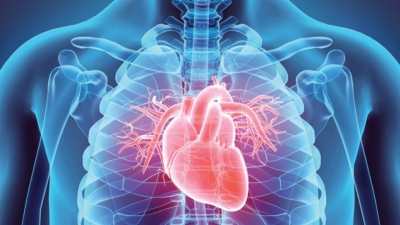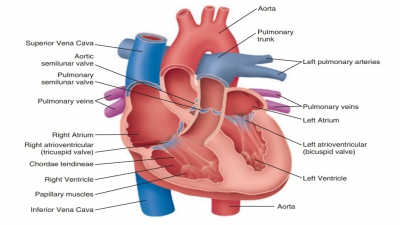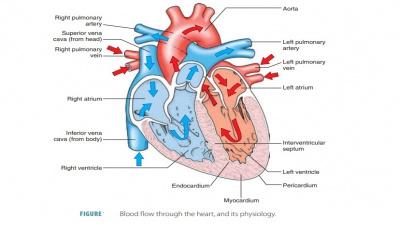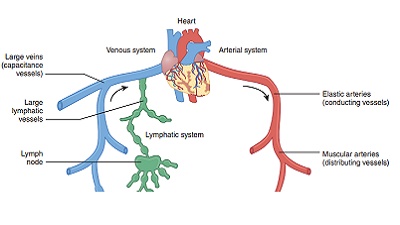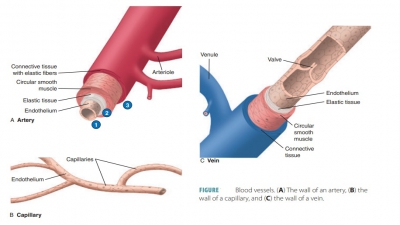Blood Circulation
| Home | | Anatomy and Physiology | | Anatomy and Physiology Health Education (APHE) |Chapter: Anatomy and Physiology for Health Professionals: The Heart
The heart consists of two pumps located side by side, which supply blood to the pulmonary circuit and systemic circuit .
Blood
Circulation
The heart consists of two pumps located side by side, which
supply blood to the pulmonary
circuit and systemic
circuit . Blood enters the pulmonary circuit from the right
ventricle through the pulmonary trunk, which extends upward posteriorly
from the heart. It divides into right
and left pulmonary arteries, which
enter the right and left lungs, respectively. Repeated divisions connect to
arterioles and capillary networks associated with the walls of the alveoli,
where gas is exchanged between blood and air. The pulmonary capillaries lead to venules and then veins. Four pulmonary veins, two from each lung, return blood to the left
atrium, completing the vascular loop of
the pulmonary circuit. Capillaries are also called exchange vessels because their thin walls allow the exchange of
dissolved gases, nutri-ents, and waste products between surrounding tis-sues
and the blood.
The systemic circuit involves the movement of freshly
oxygenated blood from the left atrium to the left ventricle and then into the aorta and its branches, leading to all body tissues. Eventually,
it makes its way to the companion vein system that returns blood to the right
atrium. FIGURE 18-1 shows the
two circuits of blood circulation.


